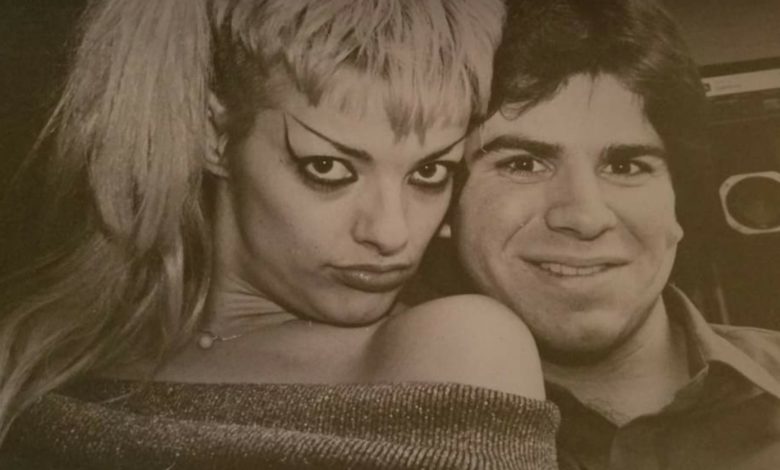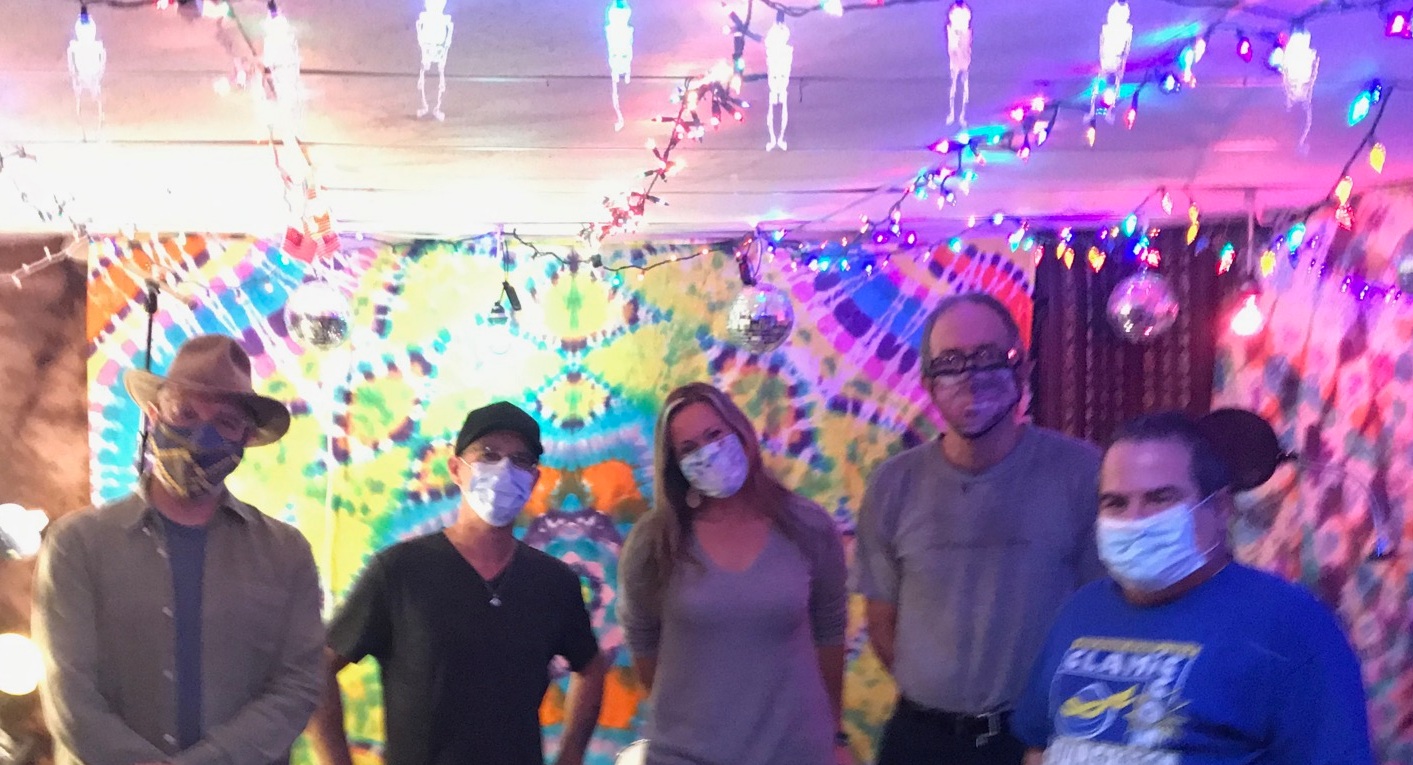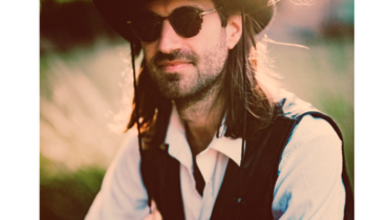The Making Of “Fade Away Diamond Time” Episode 5: Jim Cardillo
As one of the early believers, the former publishing A&R signed Neal Casal. He tells us about working with Neal and making Fade...

Jim Cardillo “believed in Neal before he was fully able to believe in himself”. He signed him to a publishing deal with Warner Chappell in 1991, which then led to a recording contract with Zoo Entertainment.
Jim, can you introduce yourself a little bit ? What did you do before being A&R at Warner Chappell ?
I spent 30 years working in the music business. I started in College Radio in the early 80’s. By 1985, I was doing radio promotion at Island Records with U2, The Waterboys, Tom Waits and a bunch of other great acts. From there, I did publicity at MCA Records and had the good fortune of working with Tom Petty, Waylon Jennings, Steve Earle, Lyle Lovett and Nancy Griffith. After that I spent some time at Concrete Marketing before going back to MCA as the Director of Alternative Marketing. In 1990, Warner/Chappell hired me to do A&R. I spent 7 years at the company. Aside from Neal Casal, some of my notable signings included: Green Day, Cracker, Soul Asylum, Gin Blossoms, Ministry, Dream Theater, Keb’Mo’ and Albert Collins. Following Warner/Chappell, I did A&R for labels like Velvel and Koch.

How and when did you meet Neal ? What did you find in him as an artist?
Gary Waldman (Neal’s manager and long time friend) and I had been friends in the mid to late 80’s during our Heavy Metal days. He was working at Megaforce Records and I was at Concrete Marketing. We would talk music and he knew what my tastes were outside of Metal. In 1991, he mailed me the Neal Casal demo. I was two and a half songs in, when I called him and asked, ‘who is this guy?‘
I made plans to fly to New-York and meet with Gary and Neal two weeks after that. We met at the hotel I was staying at and Neal brought his guitar. We spoke for a bit and then Neal took out his guitar and started playing. I wanted to sign him when I heard his tape. By the time he played for me, it was not even a question. I knew I had to work with him.
Were you impressed by the quality of Neal’s writing?
Neal was a tremendously talented writer early on. It was not a case where you were like, “he’s pretty good, maybe he’ll develop into something“. I was sold on his writing from that first batch of songs. He was the complete package: he could write, he could sing, he was young, prolific and he looked good. Neal was undeniable.
Do you think Neal defined himself more as a songwriter or as a guitarist at the time ?
Despite starting out as a guitarist for Blackfoot, Neal was definitely a songwriter. For as much as folks knew Neal later in his career as this great guitarist and picker, that was so far from where he started out. He was all about writing a great three and a half minute song.
What was the objective, the goal for this record ? Were there any classic albums set as examples ?
We never verbalized an objective. You set out to make the best record possible and you pray it does well enough that the record company lets you make a second one.
You have mentioned some songs (“Indian Summer”) that were on the demo Gary gave you but did not make it onto the album…Why do you think ? What is your opinion on those songs not featured on Fade?
Oh gosh, that’s opening up a can of worms lol. John Ginty and I believed that some great songs were left off of FADT. “Indian Summer” and “Silver Dollar” were amazing. I’m really hoping that those early recordings are released one day because there are some gems in there. As to why they weren’t included, Neal felt that those tunes were old and immature. By the time we were recording FADT, some of those songs were five years old. Neal was more interested in what he had written recently, which is true of any artist I ever worked with. Still, I would love to do an Early Years record, so folks can hear those songs.

As publishing A&R, what was your input ? On Fade and on future recordings ?
I worked with Neal for 10 years and my role evolved and changed over time.
Early on, I was Neal’s source of validation and confidence. Someone at the world’s largest publishing company thought he was talented and invested money into his career. In a way, I believed in Neal before he was fully able to believe in himself. A few years had gone by before we got the Zoo Records deal. In that time, I always supported the idea of Neal recording as many demos as possible. I always wanted him to be moving forward and growing, instead of waiting around for a record company to come to their senses.
The FADT team was so strong that, by that time, Neal didn’t need my input on arrangements and stuff. When you have guys like Jim Scott, Don Heffington and Bob Glaub, the last thing you need is an A&R guy offering an opinion. Sometimes you need to know when to step back and let the magic happen.
Can you tell us about that dream team : Scott, Ginty, Angie, Don, Bob…
“Dream team” says it all. I think what Gary (Waldman) put together was so organic and special. We were a family. You could chase that unicorn for years and never come up with a greater group of people.
I’ve worked with so many producers over the years but nobody is like Jim Scott. He makes everyone around him better and he puts every artist in the most comfortable headspace so they can be at their creative best. Don Heffington and Bob Glaub are legends and neither get the credit they deserve. Don and Bob were the adults in the room early on. Neal would come in describing some overblown part for a song and those guys would listen and say, “even if we could do that, we wouldn’t.” LOL then they would go in and play exactly what the song needed. Neal learned so much from Jim, Don and Bob. They were a huge influence on him over the years and they played a pivotal part in Neal’s musical education. John Ginty is a flat out beast. To me he is Mr. Soul. He has such a gift to just vibe out on a piece and add these beautiful parts to it. John’s playing just hits you in the gut and makes your insides tingle. I think out of the early team, the only person who didn’t know how good Angie McKenna was…was Angie McKenna herself. She was Emmylou Harris to Neal’s Gram Parsons. What Angie brought to those songs is often overlooked but her contributions can’t be overstated. Angie is a powerhouse.

Did you attend the sessions at The Palacio ? What was the vibe ?
I went up for a day and a half and then I was at most of the mixing sessions. Palacio was a genius last minute move by Gary Waldman. It will go down as one of his finest calls. I’m sure someone has recounted how the original studio fell through. By moving to Palacio, they not only had a beautiful living and recording space, but it guaranteed them total isolation from the label. It was in the middle of nowhere, nobody was going to pop in on their way home from the office. It gave Neal total autonomy and allowed him to thrive in this amazingly creative environment.
What is your favorite song on the album ?
“Cincinnati Motel”. There are so many great touches in that song. I love that the album title came from a lyric in the bridge. It also has that great rolling sense of movement that you find in a song like the Waterboys, “This Is The Sea”. “One Last Time” might be my favorite band performance on the record. Just outstanding harmonies, great Ginty moments and a blistering solo.
Any other particular souvenir/anecdote you would like to share ?
Neal was always wonderful to be around. We were all big fans of the Celebrities At Their Worst compilations. (Someone had collected all these Hollywood stars cursing, melting down and blowing takes.) We would listen to Casey Kasem’s long distance death dedication before we started a session. It would just make everyone laugh and stay loose. Neal had the best honest laugh.
Was there a sense of the album being part of a burgeoning musical movement ?
Not at all. The record went against the grain of everything that was going on at the time. It was all Green Day, Smashing Pumpkins, Oasis, Pearl Jam and Soundgarden at that time. You had the first Foo Fighters record coming out and that was about as far away from Neal as you could get. Years later, folks linked FADT and what the Wallflowers and Counting Crows were doing but it didn’t feel that way at the time.
Which influences were brought up by Neal prior or during recordings ? Neil Young ? Exile ?
Neal was a musical sponge and we were always talking about bands. I had a pretty extensive bootleg collection so I would bring him stuff by The Stones, The Band, Neil Young, Gram Parsons, The Faces and anything else cool I could put my hands on. However, with Neal, you were just as likely to talk about hair metal bands for three hours than who played guitar for Mitch Ryder.
Would you call it a “country rock” record ?
I don’t think I ever referred to it as that. The term Americana was not really used yet and guys like Steve Earle were called alt-country. To me, Neal was a singer/songwriter who made a great record.
Was there a sense of making an “important” record ?
It was important because it was Neal’s first record but no, we never thought we were making an important record. That thinking is dangerous because you start wondering about how the audience will receive it and what will radio and press think about it. That is when you start doing things for the wrong reasons and bad decisions get made.
And how did you react to his lack of impact at the time ?
It was devastating to me. We worked for years to finally get this opportunity and it was gone before it started. I remember feeling drained like, “oh shit we have to go and shop demos again!”
Do you think Neal was very hurt by that ?
Absolutely but Neal was incredibly resilient. He was bummed about it and there was a sense of, “are you fucking kidding me?” But Neal dusted himself off and did not let that setback define him. He did not even care about another major label deal. Neal was going to record albums and put them out and if five people heard them, he would be cool with that.
What happened ? Neal went on a promotional tour opening for Gov’t Mule and apparently got a call saying that the label had pulled the plug…
Neal’s A&R guy at Zoo, Bud Scoppa got fired before FADT was even recorded. That is never a good sign for an artist and 99% of the time it does not end well. Zoo started to have financial troubles and Neal was a casualty of their downsizing.
25 years after its original release, what is your own personal opinion on Fade Away Diamond Time. Is it a record that you have gone back to ?
Oh yeah, I have gone back to it quite a bit. Honestly, I probably listen to it more now than when it came out. The term, ‘timeless’ is wildly overused but I would truly call this record timeless. That is a testament to Jim Scott’s craftsmanship and Neal’s vision. It is a special record and I am still incredibly proud to have been a part of it.






